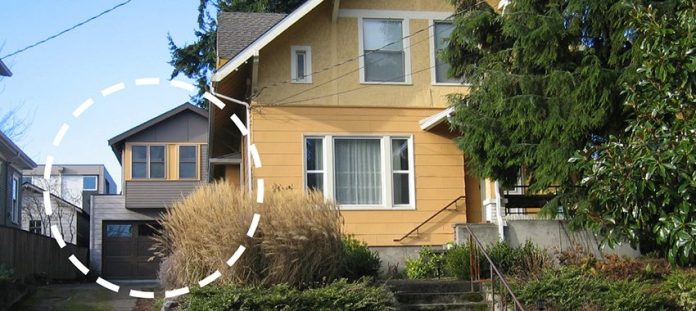
The City of Seattle should leverage the Accessory Dwelling Unit (ADU) environmental impact statement (EIS) to begin planning for broader changes outside Seattle’s urban villages. As long as we are taking the better part of a year to study parking and tree canopy, we should craft the EIS study to be broadly applicable. Doing so may speed up the rezone process and allows to replace swaths of detached single-family zoning with a more flexible zoning that allows missing middle housing types such as duplexes, triplexes, rowhouses, and courtyard apartments.
The Seattle Office of Planning and Community Development extended the comment period for EIS scoping until November 16th. We must get the accessory dwelling unit policy right. We support the effort by More Options for Accessory Residences (MOAR). To sign MOAR’s petition, click here. The group’s policy suggestions include:
- Green building incentives;
- Reduce permitting fees for ADUs;
- Apply a FAR limit to single-family zones to curb the trend of teardowns for mansions;
- Make ADUs easier to build;
- Split ownership of the lot (i.e. fee simple subdivision);
- Reduce (or eliminate) off-street parking requirements;
- “Upgrade non-conforming housing types and uses, such as duplexes, established before 1995.”
- Convert single-family zoning to Residential Small Lot in “a ring overlay within 10 minute walkshed of schools, parks, urban villages, arterials and frequent transit…”
MOAR proposes excluding the overlay Residential Small Lot (RSL) from the Mandatory Housing Program (MHA) program. It’d certainly be better than the alternative: detached single-family also with no affordability requirement.
In the long-term, RSL likely won’t be a generous enough zoning type to be the workhorse zoning in our existing single-family zones. Lowrise 1 (LR1) and Lowrise 2 (LR2) would be a better fit and allow a fuller range of the Missing Middle housing typologies. It’d also allow a larger increase in capacity, providing a clear opening to apply the Mandatory Housing Affordability program to the large patches of the city that are being let off the hook in our current plan. Whether as part of this legislation or not, I urge to the Seattle City Council:
- Upgrade high-opportunity, low displacement risk single-family zones to LR1 or LR2;
- Use MHA to capture increasing land value and fund affordable housing development.
Equity would seem to dictate that everyone should contribute something toward solving our affordability crisis. Somebody who builds a 6,000 square foot mansion should pay into the city’s affordable housing funds just as surely as someone who builds apartments. We need to apply our land value capture strategy citywide. As Sightline’s recent home price map demonstrated, many neighborhoods are seeing million dollar homes increasingly dominate their housing stock. There’s no good reason the builder or owner of a million dollar home can’t pay MHA fees.
Tons of land value is being accrued across Seattle as our city booms. If we do not seek to capture this value and harness it for building affordable housing, we won’t be doing our due diligence, and we won’t be carrying out the Housing Affordability and Livability Agenda to its fullest.
We’ve extended the EIS scoping period for our study of ADUs and backyard cottages. Comment by Nov. 16 at https://t.co/voZrtkkWqX. pic.twitter.com/hs6SgEn1v7
— Seattle Office of Planning & Community Development (@SeattleOPCD) October 31, 2017
The ADU EIS can give us information to make the case for changing single-family zoning, especially in the wealthiest and most exclusionary parts of Seattle. Parking studies are going to be required down the road as we try to convert some areas of single-family to RSL, LR1, or LR2. Rather than let obstructionists delay us, let’s broaden the scope of the EIS and use it to build a more affordable future. To submit a comment visit this website or email adueis@seattle.gov.
Doug Trumm is publisher of The Urbanist. An Urbanist writer since 2015, he dreams of pedestrian streets, bus lanes, and a mass-timber building spree to end our housing crisis. He graduated from the Evans School of Public Policy and Governance at the University of Washington in 2019. He lives in Seattle's Fremont neighborhood and loves to explore the city by foot and by bike.

